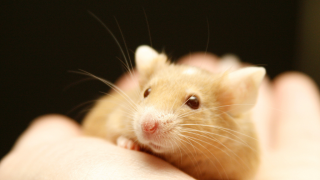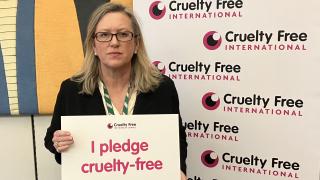Positive developments will help save animals from cruel tests
There have been recent positive developments in the international acceptance of alternative methods this summer which have involved Cruelty Free International scientists and that will help save animals from testing.
The Organisation for Economic Cooperation and Development (the OECD) has recently published new guidelines on four alternatives to animal tests.1 This means these alternatives are now approved for use around the world.
The move should help to reduce the numbers of animals suffering in cruel toxicity tests.
The alternatives include two new tissue-based eye irritation tests. The Short Time Exposure (STE) test is based on a rabbit cell line.2
And the Reconstructed human Cornea-like Epithelium (RhCE) test (available as EpiOcularTM from Mattek) uses human tissues to replace the cruel rabbit eye irritation test. It accurately predicts if a substance is not likely to be irritating if accidentally rubbed into the eyes. This test is important for chemicals and cosmetics.
The OECD has also published revisions to four guidelines for alternatives to the cruel rabbit test for skin irritation which further expands the use of the methods. Cruelty Free International scientists were directly involved in both expert groups at the OECD making these updates.
The European Chemicals Agency has, at the same time, updated their guidance for chemical companies on the use of these alternatives.3 Our team provided feedback on the draft guidance and was able to correct errors in the document that could have been misleading. The guidance further clarifies the steps that must be followed to replace the use of rabbits in skin and eye irritation tests.
Alternatives for skin and eye irritation have been approved in Europe since 2009 but rabbits continue to be used across Europe and worldwide in these tests.
Cruelty Free International hopes these updated guidance documents will make it even easier for companies to avoid using rabbits for these tests. We will continue our efforts to monitor the use of these alternatives and press regulatory authorities to ensure that they are used.
Sources:
- http://www.oecd-ilibrary.org/environment/oecd-guidelines-for-the-testing-of-chemicals-section-4-health-effects_20745788
- Test No. 491: Short Time Exposure In Vitro Test Method for Identifying i) Chemicals Inducing Serious Eye Damage and ii) Chemicals Not Requiring Classification for Eye Irritation or Serious Eye Damage (28 July 2015) and Test No. 492: Reconstructed human Cornea-like Epithelium (RhCE) test method for identifying chemicals not requiring classification and labelling for eye irritation or serious eye damage (28 July 2015)
- http://echa.europa.eu/view-article/-/journal_content/title/reach-guidance-on-information-requirements-updated












